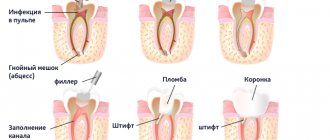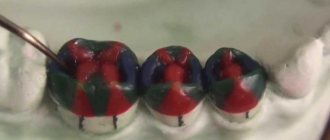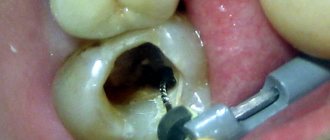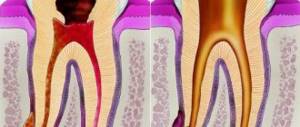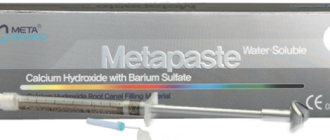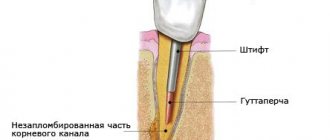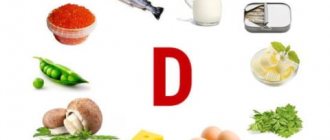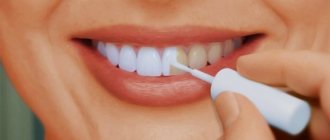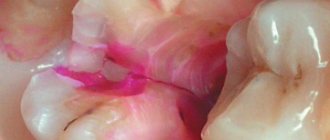Dental sealants or dental sealants are a large group of synthetic plastics based on acrylic acid esters. The use of sealants as a means of caries prevention has become widespread. The method of using a sealant is to hermetically seal the fissures of chewing teeth.
Sealants are considered the only reliable method for the prevention of caries of the grooves of teeth, but the labor intensity of this method implies its infrequent use.
Fissure sealing - dental sealants
The main role in the origin of caries is played by soft plaque, consisting of polysaccharides, bacteria, and food debris. The length of time during which plaque remains on the tooth surface is directly proportional to the likelihood of developing caries. It is in order to remove accumulated plaque that dentists prescribe daily brushing of teeth. But some teeth, due to their structure, are more difficult to clean from plaque. Cleaning chewing teeth is labor-intensive primarily due to the narrowness and depth of the grooves covering their surface.
The bristles of a regular toothbrush are too large to penetrate the fissures to a depth that allows plaque removal. Due to the fact that the tooth enamel at the bottom of the fissure is thinner than on the rest of the surface, the process of carious lesions will develop faster and damage to the internal structures of the tooth will occur to a greater extent.
When filling the grooves of a tooth with dental sealant, its chewing surface will acquire a clearer contour and become smooth and flat. There will be no grooves on it that a toothbrush cannot penetrate. Removing plaque will become much easier, and the development of caries will be much less likely.
Dental sealants in pediatric dentistry
An effective method of preventing the development of caries from the age of 4 years is the installation of sealants. Due to the child’s lack of necessary hygienic skills, quite severe damage to tooth tissue by the carious process is possible. The sealant can be installed already in case of complete eruption of the chewing surface of the tooth. Installation of sealant in adults is used with no less frequency. Before installation, consultation with a dentist is required.
Sealants are classified according to their depth of occurrence as follows:
- medium-deep ones occupy a volume of up to half the thickness of the enamel;
- deep ones pass almost the entire enamel, not reaching dentin at the level of 150 microns;
- complete reach dentin.
Modern technologies allow dental sealants to have the following qualities:
- high abrasion and compression strength;
- high adhesive resistance to hard tooth tissue;
- color stability and absence of tooth staining;
- ability to harden in a humid environment at a temperature of 18-20 C for 3 minutes;
- ease of use.
TuSil (2Seal) is a two-component paste: a consistent root canal sealer based on the chemistry of epoxy-amine resins. This easy-to-mix sealer adheres tightly to the treated canal walls and reduces shrinkage of the filling material, while also providing exceptional long-term dimensional stability and sealing properties.
Compound:
2Seal Paste A, 2Seal Paste B, Epoxy Resin Amines, Calcium Tungstate, Calcium Tungstate Zirconium Oxide, Zirconium Oxide, Quartz, Quartz Iron Oxide Dye, Silicone [Organosilicon] Oil.
Indications for use:
Long-term obturation of root canals of permanent (secondary) teeth in combination with endocanal pins.
Contraindications:
Hypersensitivity to epoxy polymers or other ingredients included in the filling material.
Attention! TuSil (2Seal) may cause sensitization in hypersensitive patients due to the presence of epoxy resins and amines.
Precautions: Do not use TuSeal on patients with allergic reactions to epoxy resins and amine-containing substances. Prevent the individual paste (A and B) and unused mixture from coming into contact with the skin and oral mucosa. In case of sudden contact, rinse with copious amounts of water.
Step-by-step instruction:
- Treatment of the root canal: before applying TuSil to the walls of the root canal, carry out its instrumentation, cleaning and drying for subsequent obturation using modern endodontic techniques.
- Dosages and mixing recommendations: mix equal volumes (1:1) of paste A and paste B on a glass or in a container using a metal spatula (weight ratio: 1 g of paste A to 1.18 g of paste B) until a homogeneous consistency.
Attention! Under certain storage conditions, TuSil paste B may separate. However, it has been proven that this does not negatively affect the quality and properties of the mixed mass.
Attention! Do not change tube caps. In color they correspond to the graphic design of their tube (white cap - white tube).
Mode of application:
According to the standard technique, TuSil is used for obturation and installation of gutta-percha, silver or titanium pins in the canal. Apply the mixed mass of TuSila to the top of the channel filler spiral. Avoid the formation of air bubbles in the material and overcrowding of the canal while slowly advancing the Lentulo apically at minimum speed. Remove the instrument slowly from the canal, also at minimum rotation speed. Otherwise, TuSil can be introduced into the canal using reamers. Select a reamer that is the same size as the last instrument used in the apical treatment. Apply TuSil to the reamer by immersing it in the material and insert it into the canal with translational movements while simultaneously rotating counterclockwise. Immerse the disinfected and dry master pin in TuSil and slowly insert it into the canal with a progressive movement. It is possible to use additional gutta-percha pins and condensation methods (vertical or lateral). In this case, apply only a thin layer of TuSila.
Unfilling the root canal:
The combined use of gutta-percha and TuSil for canal obturation allows for unsealing using standard methods. The active time of the mixture is 4 hours at a temperature of 23°C (measurements were carried out in accordance with ISO 6876:1986 (E).
Setting time: Curing time minimum 8 hours at 37°C (measured in accordance with ISO 6876:1986 (E).
, Germany
Packaging: Paste A – 4ml, Paste B – 4ml
Contraindications
There are a number of contraindications, in the presence of which the installation of dental sealants is difficult or impossible. This is a long period of eruption; lack of satisfactory oral hygiene; the presence of a carious cavity in the tooth; caries in the form of decompensation.
About the advantages. Properly installed sealants last up to five years. The sealant is guaranteed to protect tooth enamel from carious damage for a specified period.
If the sealant falls out of the tooth or damages the integrity of the dental sealant, you must immediately contact your dentist. Installation and reinstallation of sealant is possible and should be done after consultation with your dentist.
A new era in endodontics! Revolutionary bioceramic sealer
Translation (from English): Ekaterina Stankevich, therapist at the author’s microscopic dentistry clinic, Favorite Dentist
Since bioceramic technology was introduced into endodontics, it has attracted more and more attention. The more doctors became involved in studying the material, the more they saw not only the obvious advantages of the technology for endodontics, but also looked for how to use it in other aspects of dentistry. The use of bioceramic technology has not only changed surgical and conservative endodontics, but has also begun to influence the treatment plan for our patients. As a result, we are not only able to predictably save more teeth, but also improve their long-term prognosis. The ability to “save natural teeth” is back on the table today.
However, before we delve into the study of a specific technology, we must answer the question: “What is BIOCERAMICS?” Bioceramics are all kinds of ceramic materials specially designed for use in medicine and dentistry. They contain aluminum and zirconium, bioactive glass, glass ceramics, fillers and composites, hydroxyapatite and soluble calcium phosphate.
Many types of ceramics are widely used in medicine and dentistry. Aluminum and zirconium are used in prosthetic devices. Bioactive glass and glass ceramics are available to dentists under a variety of trade names. Porous ceramics such as calcium phosphate are used to fill oblique defects. even some simple calcium silicates, like PRORoot MTA (Dentsply), are used in dentistry for root canal treatment.
It is important to understand the benefits of using bioceramics in dentistry and why it is so popular. The first reason lies in its physical properties. Bioceramics are extremely biocompatible, non-toxic, non-shrinking and chemically stable in the biological environment. And besides, which is very important for endodontics, bioceramics do not lead to an inflammatory reaction even when taken outside the root canal.
Another advantage of this material is the formation of hydroxyapatite during the hardening process, which creates a primary bond between the root dentin and the canal filler. An important component of good adaptation of the material to the canal walls is its hydrophilic nature. Thus, it is essentially a bonding restoration. However, to better understand the advantages of bioceramic technology, it is necessary to understand the mechanism of hydration during the hardening process of the material
EndoSequence BC sealer, hardening reaction.
The calcium silicate powder is hydrated to form a hydrated gel of calcium silicate and calcium hydroxide. Calcium hydroxide reacts with phosphate ions to precipitate hydroxyapatite and liberate water. The water continues to react with the calcium silicate to release additional hydrated calcium silicate gel. Water here is an important factor in controlling the level of hydration and setting time of the material. Hydration reactions can be represented by the following formulas:
2(3CaO¥SiO2) + 6H2O → 3CaO¥2SiO2¥ 3H2O+3Ca(OH)2 (a);
2(2CaO¥SiO2) + 4H2O →3CaO¥2SiO2¥ 3H2O + Ca(OH)2 (b).
Hydroxyapatite precipitation reaction:
7Ca(OH)2+ 3Ca(H2PO4)2 →Ca10(PO4)6(OH)2+ 12H2O (c).
For clinical purposes, particularly in endodontics, the advantages of a ready-made hydrated preparation are obvious. This not only saves time and convenience, but also obtains the most homogeneous composition. This determines the best properties of the material. Thus, a one-component bioceramic sealer was created, which hardens upon contact with the walls of the tooth, with the moisture that is always found in the dentinal tubules.
What makes bioceramic sealer so suitable for endodontic practice?
Advantages:
high pH (12.8) during the first 24 hours of the hardening process, which determines its strong antibacterial properties;
hydrophilicity, the ability to harden in a humid environment;
high biocompatibility;
no shrinkage or solubility (which is critical for methods using sealer);
excellent sealing properties;
rapid hardening (3-4 hours);
ease of use (the particles are so small that the drug can be used in syringes).
Nanotechnology has made it possible to create particles 2 microns in size. The bioceramic sealer we present (Endo Sequence BC, Brasseler) can be used with a needle size of 0.012.
As we know, dentin is 20% water. And it is this that initiates the process of hardening of the material and the formation of hydroxyapatite. Therefore, any residual moisture in the root canal after drying will not interfere with the sealing properties of the material. This is the main advantage of the bioceramic sealer over all others.
Moreover, hydrophilicity, small particle size and chemical bonding with the canal walls determine the hydraulic properties of the bioceramic sealer (this is not only the possibility of hardening in an aqueous environment, but also improving its physical properties over time in humid conditions - in the Russian interpretation of the term, in the English meaning it is more refers to the ability to fully fill the thin space between two surfaces - the piston and the cylinder - translator's note)
But there is another aspect that improves the hydraulic properties of the sealer - this is the direct shape of the root canal itself.
It really all starts with a file. To be more precise, the shape of the channel created by the file is a constant taper. When using the EndoSequence technique, we create a taper of 0.04 or 0.06. The whole secret lies in a consistent, consistent, easily reproducible and repeatable taper. Variable taper of the root canal is not recommended due to the loose fit of the master pin to the walls of the root canal. It is this inaccuracy that leads to the need to use the more expensive and labor-intensive method of thermoplastic obturation.
Knowledge of the final channel shape (consistent taper) provides enormous benefits for creating superior hydraulics. Then add laser-calibrated gutta-percha in the future and we have perfect surface compatibility.
It is this compatibility that allows us to use the hydraulic condensation technique for obturation of root canals.
Hydraulic condensation technique.
The method of working with bioceramic material is extremely simple. Remove the cap from the syringe with EndoSequence BC Sealer. Then we place the intracanal nozzle/needle on the syringe of your choice. The intracanal nozzle is flexible and can be curved to facilitate access to the canal orifice.
Then insert the tip of the needle no deeper than the orifice 1/3 of the root canal. Slowly and smoothly squeeze a small amount of sealer into the root canal. The disposable needle can be removed from the syringe and a thin layer of sealer can be applied to the gutta-percha master pin. Slowly insert the pin into the canal to its full working length. A pin selected in size and taper will add the required amount of sealer to seal the apex.
The precision of the selected pin in combination with the created taper creates excellent hydraulics and therefore doctors are advised to use a small amount of sealer. In addition, as with other obturation techniques, the introduction of the sealer must be slow. Moreover, today, for the EndoSequence technique, gutta-percha pins with a bioceramic coating have been created, which makes it possible to achieve high adhesion forces in the canal not only of the sealer with the walls of the tooth, but also of the sealer with the cone of the pin.
The new technique turned out to be simpler, easier and faster to implement. In addition to the above advantages, bioceramic sealer has been shown in studies to increase root resistance to fractures.
Unsealing bioceramics
Cases filled with bioceramic sealers can definitely be treated. The key is using the obturation method correctly. Bioceramics should not be used as the only filler, only as a sealer with a gutta-percha point selected in size and taper. The more accurately the pin adheres to the canal walls, the easier it is to unseal (the less amount of sealer on the walls).
The unsealing technique itself is relatively simple. It is necessary to use ultrasound with a large amount of water. This is fundamentally important at the beginning of the procedure when passing through the ostial third of the canal. Ultrasonicate water up to half the length of the canal. At this point, add gutta-percha solvent to the canal (chloroform or xylene) and go to file 30.04 or 35.04 at high speed. File the canal to the apex, using solvent as needed. An alternative would be to use hand files for the last 2-3mm at the apex, followed by machine filing to maintain the taper.
Bioceramics for root canal obturation
We are all familiar with the successful material MTA for filling root canals and apical retroobturation. In addition, we found that since MTA is a modified Portland cement, it has certain difficulties in mixing, obtaining a homogeneous mass, insertion into the root canal, and obturation of the apex during apical surgery. The size of its particles does not allow it to be introduced using thin needles (and used as a sealer with guttapecha - translator's note), and the need for mixing complicates the obturation process.
However, it has a number of positive characteristics, including a high pH of 12.5, which gives it strong antibacterial properties.
And it is thanks to MTA that we now have a more advanced form of bioceramic sealer.
This new material, EndoSequence Root Repair, is available in syringes for use as a sealer and in putty form, a thick consistency similar in pliability to Cavit G, for use in apical surgery, closure of perforations and external resorptions.
EndoSequence Root Repair is a white sealer with all the properties of bioceramic sealers: high pH, resistance to dissolution and microleakage, non-shrink setting, excellent biocompatibility and excellent physical properties. Compression resistance is 50-70 MPa, which is similar to ProRoot MTA (Dentsply) and BioAggregate (Diadent). The ready-to-use form is an undoubted advantage of this drug and distinguishes it from the previous generation by ease of use.
Studies on the antibacterial properties of EndoSequence Root Repair sealer have shown similar results to MTA against E. faecalis.
Under experimental conditions, it was revealed that the connection of EndoSequence Root Repair sealer with the walls of the root canal is higher than other sealers in wet conditions.
Pulp coating with bioceramics.
Another important advantage of using bioceramics in a syringe is that dentists can easily use it in cases of direct and indirect pulp capping, pulpotomy, and other pulp therapy. Previously, MTA was considered an ideal material for this, since it did not cause an inflammatory response in the pulp. But, unfortunately, due to difficulties and inconvenience of use, it has not become widespread. The new material solves this problem, so we hope for its wider use in pediatric practice.
Method of application: isolation of the tooth with a rubber dam, treatment of the exposed pulp with sodium hypochlorite, application of a small amount of sealer with a syringe or putty form from a jar. The putty shape can be adapted to the surface with a moistened cotton ball. Then coat the bioceramics with a compomer or glass ionomer liner and fabricate the adhesive restoration in one visit.
Future development. Use in orthopedics.
The future promises to be even brighter for bioceramics. Rapid-hardening (8-10 min) restorative materials will be created for use in pediatric dentistry. We are also seeing developments in bioceramic cements for crown luting. It is not difficult to predict that we will see widespread adoption of this technology in other areas of dentistry.
The advantages of the new technology of using bioceramic sealer allow us to be more conservative in the treatment and formation of the root canal, which primarily leads to the preservation of natural tooth tissue. Application in surgery also shows the distinctive properties of bioceramics. The future is bright not only for the development of bioceramic technology, but also for dentistry itself
Source: Realworldendo.com
Orthodontist appointment at GoldenMed clinic
Our dentistry in Domodedovo invites you to make an appointment with the best orthodontic specialists. We will help correct dental anomalies and bite. This is a long and complex process that can be divided into a number of stages:
- Carrying out diagnostics to check the condition and make a diagnosis;
- examination of the jaw bones using x-rays;
- individual selection of methods;
- treatment of gum and dental diseases, professional cleaning and preparation;
- installation of the selected device to correct the condition of the teeth;
- regular visits to the orthodontist to monitor the condition and make changes to the device;
- removal of the device after completion of treatment;
- consolidation of the result.
Implantation services in Domodedovo
In the absence of dental units, restoration is required; for this, various techniques are used, including prosthetics.
Stages of work:
- Installation of dental implants into the jaw bone, they take about 3-6 months to take root.
- After healing, the doctor exposes the implants and adds abutments to them. After this, the base for the teeth is ready.
- Position of artificial teeth.
There are the following types of implants: cylindrical, screw, plate. We try to offer the best option; in terms of reliability, these are screw implants. This method allows you to achieve excellent results in the absence of any teeth. Completely exposed gums are also restored; the technique serves as an alternative to dentures.
Choosing implants provides the following positive aspects:
- dentures, crowns, bridges secured on implants are almost impossible to distinguish from your dentition;
- the use of implants forms a complete basis for artificial teeth;
- long service life and high strength;
- no risk of bias;
- minimal period of adaptation;
- there is no need to grind down adjacent teeth.
